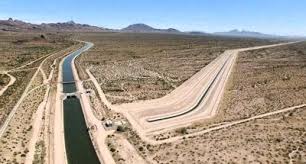
PHOENIX — For the first time ever, Arizona has approved a plan allowing water to flow from rural farmland into fast-growing suburbs — a move aimed at easing the state’s housing crunch, even as questions loom about how long such transfers can really sustain growth.

On July 18, the Arizona Department of Water Resources (DWR) signed off on a landmark decision to let Buckeye withdraw nearly 6,000 acre-feet of groundwater each year from the Harquahala basin in western Arizona — enough to supply about 17,000 homes for the next 110 years. Neighboring Queen Creek received permission to draw up to 5,000 acre-feet annually, supporting around 15,000 homes.
The move comes just two years after the same agency blocked new subdivisions in parts of Buckeye and Queen Creek, ruling that both communities failed to meet Arizona’s legal standard of proving a 100-year water supply for new homes. That led to fierce pushback from developers and a lawsuit by the Home Builders Association of Central Arizona, which argued that the state’s groundwater modeling was flawed and overly restrictive.
“This approval from the Arizona Department of Water Resources unlocks another water supply that Arizona can use to support our communities, economy, and way of life,” Gov. Katie Hobbs said in a statement celebrating the move.
Yet experts and state leaders warn the solution may be temporary — and that Arizona’s groundwater law from 1980 was never designed to provide a simple fix for today’s mega-growth suburbs.

Senate Minority Leader Priya Sundareshan acknowledged that the law allows transfers from the Harquahala basin but called the approach “philosophically wrong.” She added, “I don’t think it solves anyone’s problems really on a permanent basis.”
Sarah Porter, director of the Kyl Center for Water Policy at ASU, echoed that caution, pointing out that Buckeye and Queen Creek’s new allocation will drain more than a million acre-feet from Harquahala over the next century — an area where less than 2% of rainfall naturally replenishes groundwater.
“The total amount of water that Buckeye and Queen Creek can withdraw over 110 years is a great deal of water,” Porter said. “It’s good news for Buckeye and Queen Creek … but this inter-basin transfer isn’t a total solution.”
Porter also stressed that bigger water solutions — like advanced purification and “Ag-to-Urban” water rights transfers — will be needed to secure Arizona’s future, especially as Colorado River shortages and long-term drought shrink available supply.
Leaders in both suburbs say they are relieved to finally have a path forward.
“This has been years in the making and will help diversify the town’s water portfolio with a more sustainable source of water that has been set aside for growth in the state,” said Queen Creek Mayor Julia Wheatley.
Eric Osborn, mayor of Buckeye, called it “a significant development … to ensure our current and future residents continue enjoying a great quality of life.”
Harquahala landowners, many of whom are winding down farm operations, will see financial benefits too. “This transition from farming to renewable energy was the long-term plan for this area, and we are grateful to be part of this process,” said David Lamoreax, whose family has farmed in Arizona for more than a century.
Still, getting permission is only step one. Before a single new foundation is poured, Buckeye and Queen Creek must spend millions to build pipelines and delivery systems to move the water — a process that could stretch for years.
Meanwhile, other Arizona communities in so-called Active Management Areas are watching closely — hoping this historic water shift won’t drain more than it delivers, as cities continue their delicate balancing act between growth and sustainability in the desert.
Originally reported by Howard Fischer in AZ Capitol Times.